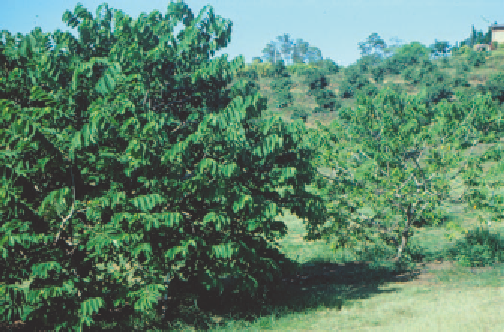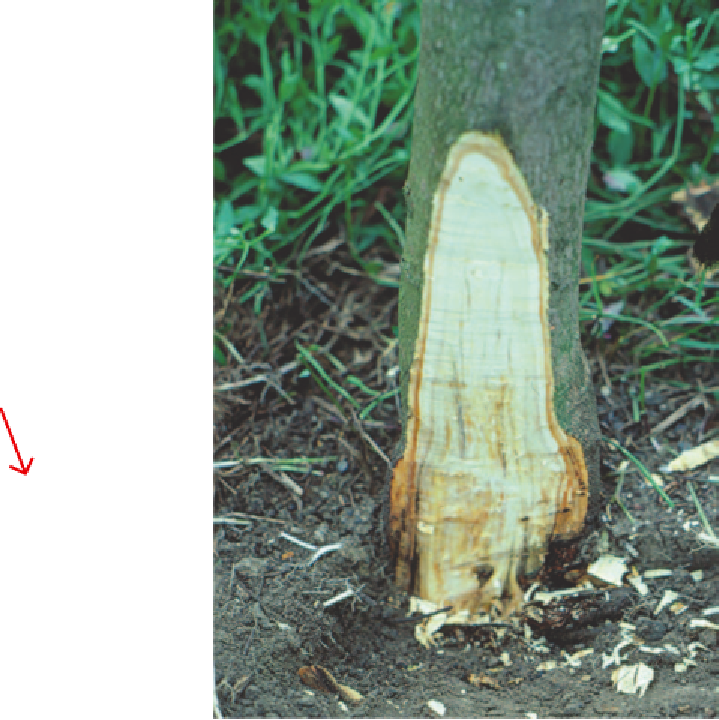Agriculture Reference
In-Depth Information
8
CUSTARD APPLE (ATEMOYA)
(
Annona
spp.)
Atemoya or custard apple is a member of the genus
Annona
in the family Annonaceae. All
Annona
species are
native to the American tropics. Related species include
cherimoya (
A. cherimola
), soursop (
A. muricata
), bullock's
heart or custard apple (
A. reticulata
), and sugar apple
(
A. squamosa
).
Atemoya is a hybrid between
A. squamosa
and
A. cherimola.
Several named varieties are grown and propagated by
grafting. Atemoya can be grown on a range of soil types
in warm subtropical and tropical areas.
Growth-f lushing also ceases. Leaves usually desiccate
within a month without becoming chlorotic and either
fall or, in the case of rapid death, remain attached.
Darkening of the systemically infected leaf veins can
occur, but this symptom is more common in rootstock
seedlings.
In older trees, a slow decline occurs over two or more
years. On affected limbs, mature leaves are shed and the
expanding young leaves appear less vigorous, pale green
and smaller in size. Branches become sparsely foliated and
subject to sunburn. The subsequent spring and summer
BACTERIA
BACTERIAL WILT
■
Cause
The bacterium
Ralstonia solanacearum
.
Symptoms
Bacterial wilt causes a rapid wilt and death of young trees
and a slow decline of old trees. Seedlings and young trees
(up to three years of age) may have wilted foliage during
the warm summer and autumn months. In these cases,
foliage appears dull green and hangs almost vertically.
Fig 8.2 Bacterial wilt symptoms in trunk. Discolouration of the
vascular tissue under the bark is typical.
Fig 8.1 Bacterial wilt showing tree decline (right). Affected trees lack
vigour and have a sparse, unthrifty appearance.














